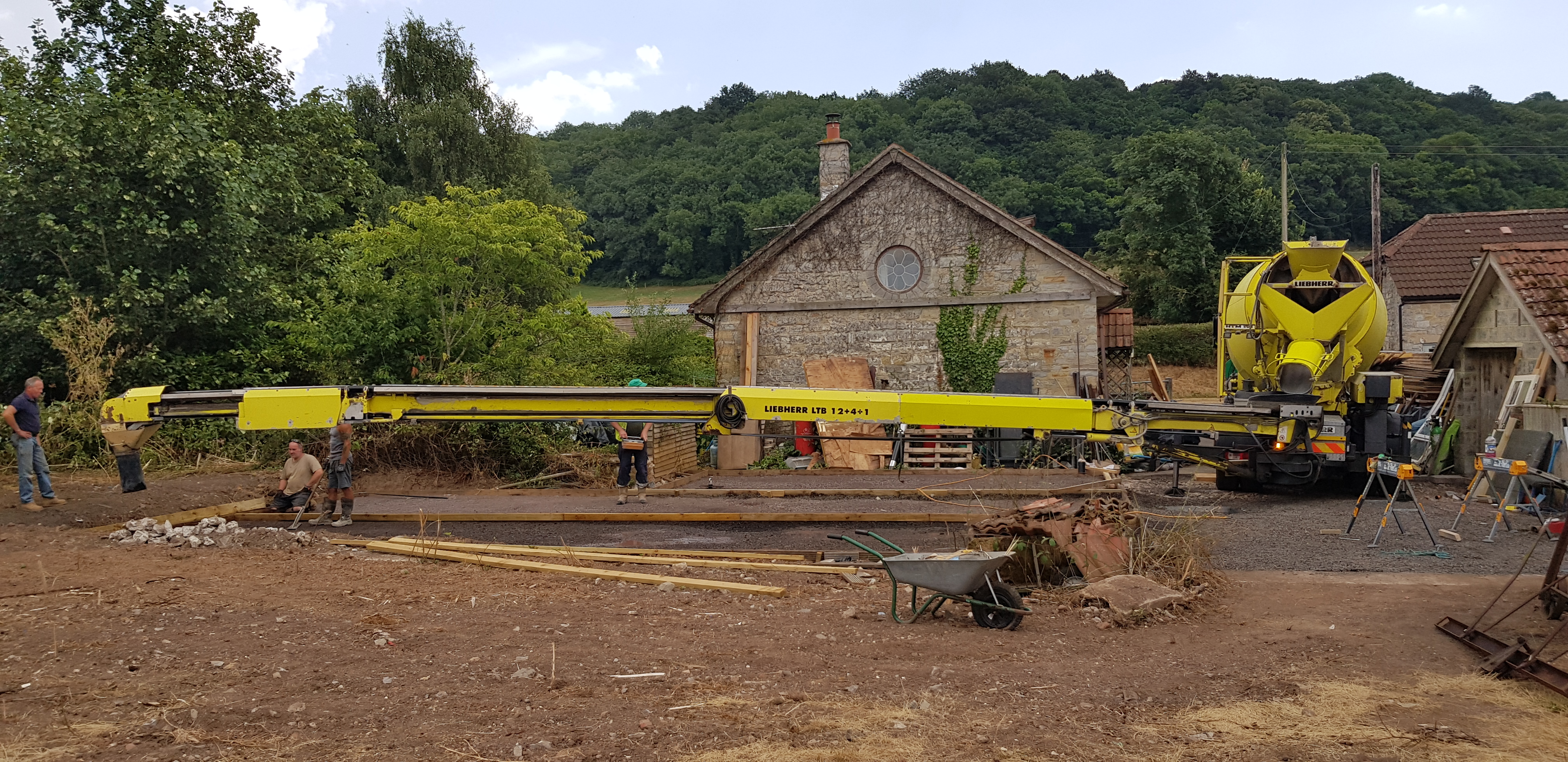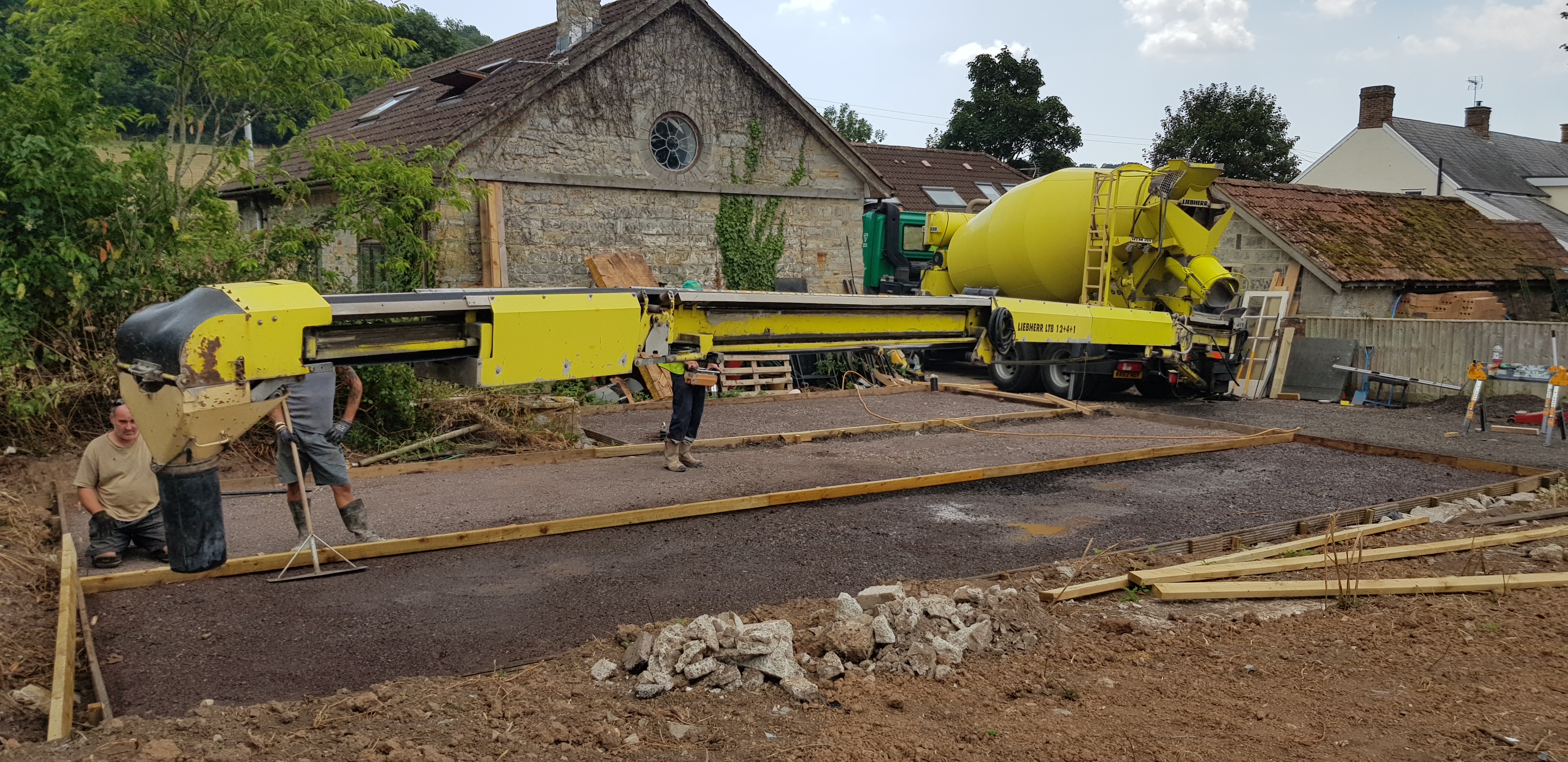Hi - if pumping, the mix will be slightly wetter than it might be otherwise. If your formwork is square to the the nearest 1/2 inch that's probably just fine. If it were me doing it, I'd put down a sheet of DPM across the whole thing - wrapping the edge over your formwork and fixing it along the edge with battens. Two reasons for this:
1) the concrete will cure better, as the soil underneath won't suck out any moisture from it.
2) you'll save a bit of concrete (at £100+VAT or more per metre) from leaking out under the forms under the outer corners (I take the previous poster's word for the fact that if you follow his technique you won't 'lose' much but...especially if it's a 'pump mix').
Spending £20 on some plastic sheet and half an hour fixing it in place might save it's worth in concrete (there's a certain amount of waste with a pump anyway) and yield a better-cured slab.
Cheers, W2S
PS I'd definitely recommend a poker (a small elctric one should be fine) - I would say this is another factor in favour of the DPM sheet suggestion, as the poker does mobilise the water and fines in preference to the heavier bits.






































